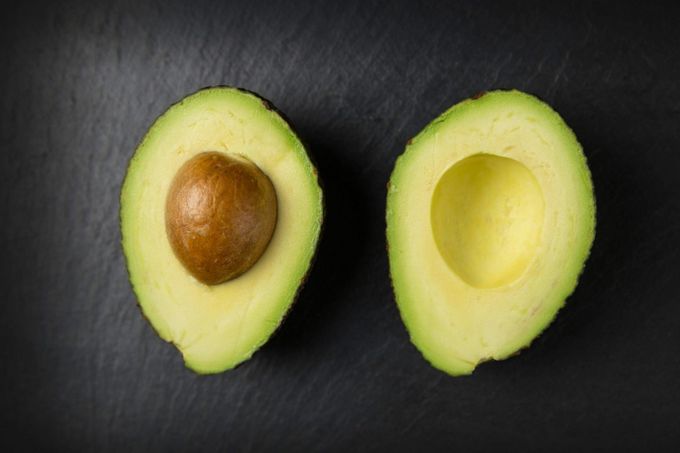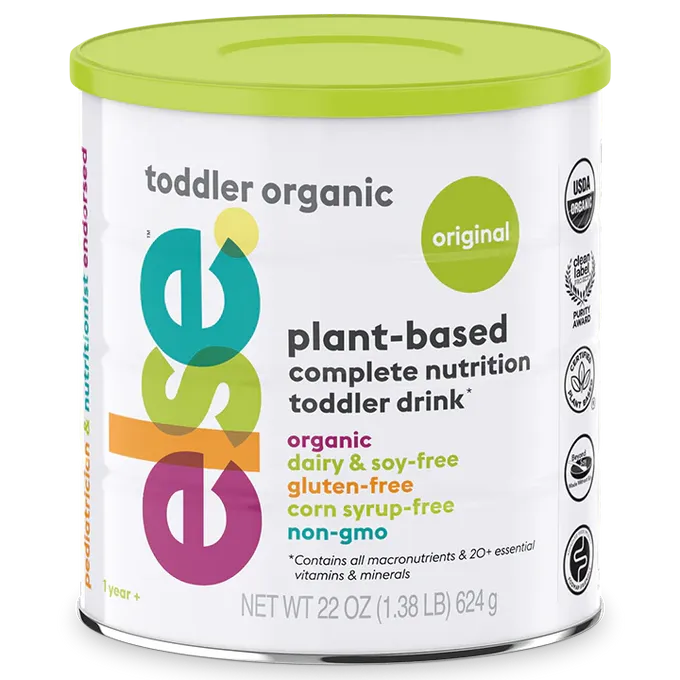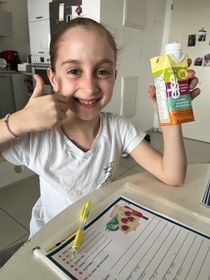Boosting Your Child's Weight: Tips on How to Make a Child Gain Weight
Updated May 21, 2024

When a child needs to gain weight swiftly, every calorie must be packed with nutrition. This guide provides clear, pragmatic strategies for how to make a child gain weight fast, without compromising on health or pushing them beyond their limits. We’ll cover how to enrich your child’s diet with calorie-dense foods in a balanced way and offer advice on managing meal times even for picky eaters.
Key Takeaways
Caloric intake is central to children’s weight gain, emphasizing nutrient-dense foods over junk to ensure healthy growth.
Strategic meal planning with meals and snacks spread out can help to systematically increase caloric intake for underweight kids.
Patience and persistence are crucial when dealing with picky eaters; involving kids in food prep and making meals fun can encourage better eating habits.
Understanding the Basics of Weight Gain in Children
Weight gain is a crucial component of a child’s growth and development, not unlike adults who require a certain body weight to maintain health and vitality. Just as adults need a certain amount of weight to maintain health and vitality, children need to gain weight as they grow, especially during their first year.
This helps them achieve peak physical and cognitive development. However, parents often face the challenge of finding high-calorie foods and snacks suitable for picky eaters, which might hinder weight gain.
Children who have difficulty gaining weight due to selective eating or consuming more fast food may benefit from a multivitamin supplement. Therefore, the focus should always be on increasing calorie intake in a healthy and balanced manner.
However, it’s not just about the quantity of food. The quality matters too. The strategy of making a child gain weight fast should not involve stuffing them with junk food, but rather focus on nutrient-dense meals and snacks. Identifying when your child needs to gain weight can be challenging. What role do calories play in this process? Let’s break it down.
Focus on nutrient-dense meals and snacks rather than junk food
Identify when your child needs to gain weight
Understand the role of calories in the weight gain process
Recognizing Signs Your Child May Need to Gain Weight
Identifying when your child needs to gain weight is the initial step towards rectifying the situation. If a child’s weight falls within the bottom 5th percentile compared to their height, they are classified as underweight. This classification is based on standardized growth charts. Monitoring your child’s weight can help identify children not gaining enough weight, which might experience failure to thrive, leading to insufficient weight gain, and can affect reaching their height potential and delay developmental milestones like walking and talking.
Several factors can contribute to inadequate weight gain, including:
Incorrect feeding methods
Digestive issues
Food intolerances
Chronic health conditions
Infections
Metabolic disorders
Simply not eating enough
Children who are picky eaters, consume more fast food or processed foods, or experience weight loss may have difficulty gaining weight.
Parents may feel concerned about their child’s nutrition and peak growth and might notice signs like a sudden change in eating patterns and weight drop, prompting the need to consult with a doctor.
The Role of Calories in Weight Gain
Calories are a key contributor to weight gain. They serve as the body’s fuel, providing the energy needed for growth and development. To gain weight, a child must consume more calories than they burn, creating a calorie surplus. This surplus contributes to the body’s energy storage and mass increase, which is how children gain weight.
That being said, a calculated approach is required when adding calories. For a safe and steady weight gain, it’s recommended to aim for a daily calorie surplus of 500 calories, which can lead to a weight gain of approximately one pound per week.
Now that we’ve understood the fundamentals of weight gain, let’s look at the essential nutrients that can support healthy weight gain in children.
Essential Nutrients for Healthy Weight Gain
Although calories are important, the source of these calories differentiates healthy weight gain from unhealthy weight gain. Not all calories are created equal. Nutrient-dense foods, rich in essential nutrients, are the key to healthy weight gain in children.
Starchy carbohydrates such as potatoes, bread, and rice provide energy and support healthy weight gain. They are like the fuel that keeps your child’s engine running. Healthy fats are also important for weight gain and can be easily incorporated into a child’s meals. Think about adding grated cheese to their pasta or a splash of full-fat milk in their morning porridge. These nutrients not only help in weight gain but also contribute to overall health and development.
Nonetheless, a nutrient-rich, healthy diet constitutes only part of the solution. The other part involves strategic meal planning.
Strategic Meal Planning for Gaining Weight Appropriately
Having a meal plan is a roadmap to help your child gain weight appropriately. It not only ensures that your child gets all the nutrients they need but also helps to increase their overall caloric intake. Structuring a child’s day with 3 meals and 2-3 snacks can systematically increase overall caloric intake for weight gain.
However, simply providing food isn’t enough. It’s important to avoid unlimited access to food throughout the day. This helps prepare children to eat larger volumes at designated meal and snack times. Yet, what would these meals and snacks comprise? Let’s explore how to incorporate high-calorie foods and the best times to offer these foods for optimal caloric intake.
Incorporating High-Calorie Foods
Choosing high-calorie foods is a strategic way to increase your child’s caloric intake without significantly increasing the volume of food they eat. Foods like:
avocados
eggs
nut butters
hummus
full-fat milk
chicken
bananas
dark chocolate
yogurt
cheese
whole wheat bread
granola
salmon
whole wheat pasta
beans
potatoes
High-calorie healthy foods that provide enough calories can be incorporated into your child’s diet.
Dairy products like whole milk, cream, and butter are simple, high-calorie additions that can easily be included in a child’s meals. You could add a dollop of cream to their soup or a smear of butter on their toast. Nutritious calorie and protein boosters such as:
oils
butter
nuts
cheese
heavy whipping cream
can be strategically added to a child’s meals to increase caloric intake.
Providing snacks like yogurt, breadsticks, and small sandwiches between meals can also play a vital role in meeting a child’s higher caloric needs.
Timing Meals for Optimal Caloric Intake
The timing of meals plays a significant role in achieving optimal caloric intake. Meals and snacks should be offered every 3-4 hours to ensure consistent calorie intake, which is essential for weight gain in children. This also means establishing structured meal and snack times that encourage focus on eating, such as sitting at the table without electronic distractions.
To address failure to thrive, meals can be strategically planned by spacing them adequately and offering foods with textures that children can easily eat to increase calorie consumption. With a clear understanding of what and when to feed your child, let’s explore some inventive methods to increase their caloric intake.
Creative Ways to Add Extra Calories to Your Child's Diet
Getting creative with your child’s food can make the journey of weight gain a fun and enjoyable experience for both you and your child. For instance, calorie-dense options like cream cheese and peanut butter can serve as dips or spreads to enhance calorie intake, especially for children who can only eat small amounts at a time.
Another creative way to add calories is by incorporating rich sources of fats and oils like cream, powdered milk, and olive oil into regular meals. For example, you could add more cheese to their quesadillas, serve them with sour cream and guacamole, or use full-fat yogurt in recipes.
Pre-bedtime snacks like smoothies, milkshakes, and peanut butter toast as well as substituting commonly eaten vegetables with higher-calorie options such as potatoes, sweet potatoes, and corn can effectively increase a child’s daily calorie intake. The question then arises: how can we make these high-calorie foods more enticing to children, particularly the fussy eaters?
High-Calorie Smoothies and Shakes
Children love drinks, and what better way to rapidly and enjoyably increase their caloric intake than with delicious high-calorie smoothies and shakes? These drinks can be packed with essential ingredients for boosting the calorie content like full-fat products such as whole milk and yogurt, as well as nut butters and seeds.
You can get creative with the recipes. For instance, a homemade weight gainer drink could consist of:
Whole milk
Peanut butter
Honey
Fruits like mango
Combined in various ways to enhance flavor. Serving these high-calorie drinks between meals is an effective way to assist a child in gaining weight.
Sneaky Ingredient Swaps
Another creative way to add extra calories to your child’s diet is through sneaky ingredient swaps. These are higher-calorie substitutions that can be incorporated into a child’s diet to help them gain weight without needing to significantly increase the volume of food they eat.
For example, in breakfast sandwiches, you can swap in full-fat cheese, use a whole egg, add extra ham, and include slices of avocado to boost the calorie content. In creamy dishes like Mac and Cheese, opting for table cream or whipping cream in place of milk can significantly increase the dish’s caloric value. Even nuts, oils, and seed butters are excellent ingredient swaps that can be used in a variety of recipes to enhance calorie content without changing the taste too much.
What if your child is particular about their food choices? How can we encourage them to eat these foods?
Encouraging Healthy Eating Habits in Picky Eaters
Picky eaters can pose a unique challenge when it comes to weight gain. Developmental delays, medical conditions affecting swallowing, and sensory issues associated with autism can result in children eating too little. However, with a little creativity and patience, you can encourage healthy eating habits in your picky eater.
One powerful influence on a child’s eating habits is the behavior modeled by their parents and older siblings. Children often emulate the eating habits of their family members, motivating them to try foods that they see their family members enjoying.
To foster healthy eating habits in picky eaters, try the following strategies:
Use positive language when talking about food and mealtimes.
Focus on the child’s nutritional needs and explain why certain foods are important for their health.
Consistently introduce new foods in a non-confrontational way, such as offering a small portion alongside familiar foods.
By implementing these strategies, you can help your child develop a more varied and balanced diet.
How can we make food a more exciting and engaging experience for fussy eaters?
Making Food Fun and Engaging
Making food fun and engaging is an effective strategy to get picky eaters interested in their meals. This can be as simple as creating meals and snacks that incorporate at least one favored item, making it more appealing for the child.
You can also get creative with the presentation. Food shaped using cookie cutters can make meals visually appealing for children, increasing the likelihood that they will eat it. Even allowing children to play with their food can increase familiarity and comfort, helping to overcome aversions.
Encouraging children to be involved in creating their own meals can make food exploration enjoyable and engage them in the eating process.
Patience and Persistence: The Key to Success with Picky Eaters
When dealing with picky eaters, patience and persistence are key. Children’s initial rejection of new foods can often be overcome with repeated exposure. However, this doesn’t happen overnight. In fact, it may take presenting a new food 10 to 20 times before a child begins to accept it.
While it can be frustrating when your child refuses to try a new food, it’s important to remain patient and avoid pleading, begging, or threatening. Remember, the goal is not only to help your child gain weight but also to foster a healthy relationship with food.
While assisting our children in developing healthy habits, such as healthy eating, keeping track of their progress and health remains equally important.
Monitoring Your Child's Progress and Health
Monitoring your child’s growth and development is fundamental in your efforts to help them gain weight. Utilizing a growth chart is essential for tracking a child’s growth and ensuring it aligns with their age-related expectations, thereby indicating if the child is gaining weight appropriately. Regular growth monitoring sessions can also help detect any nutritional issues early.
If a child is not gaining sufficient weight over a period of one or two months, a healthcare professional should perform an evaluation to consider necessary changes to their diet or feeding approach. Keep in mind that every child is unique, and strategies that work for one may not be as effective for another. Therefore, it’s important to set realistic goals and adjust the plan as needed.
Setting Realistic Goals
When it comes to setting goals for your child’s weight gain, ensure they are SMART:
Specific
Measurable
Achievable
Results-focused
Time-Bound
Goals should be straightforward and clearly defined, with tangible evidence once achieved, and should feel challenging yet attainable.
For instance, your goal could be to ensure your child has a serving of fruit daily, to change to low-fat milk, or to limit screen time to a maximum of two hours a day. Using a SMART goal worksheet can help in creating these goals, and achieving early success with these goals should be followed by regular updates at every medical visit.
Adjusting the Plan as Needed
As you monitor your child’s progress, be prepared to adjust the plan as needed. If a child is consistently not gaining enough weight or is losing weight, a condition known as failure to thrive, it may be time to revisit the current plan.
Treatment for failure to thrive includes ensuring the child receives the necessary calories for growth. This can involve high-calorie foods or formula, and addressing any underlying causes. Remember, the goal is steady and healthy weight gain, and it’s okay to make changes along the way.
When to Consider Nutritional Supplements
Sometimes, even after trying a plethora of strategies, you might find that your child is still struggling to gain weight. In such cases, you might need to consider nutritional supplements. However, it’s important to remember that food should be the primary source of nutrients for children before considering the use of nutritional supplements.
Nutritional supplements like PediaSure or Boost Kid Essentials can provide extra calories and nutrients to help children increase calorie intake. If a child dislikes the taste of nutritional supplements, they can be used creatively in smoothies or oatmeal to improve palatability. It’s also essential to consult a doctor before starting any nutritional supplements for a child’s weight gain.
Else Plant-Based Complete Nutrition for Toddlers, can help with Weight Gain
If you’re in search of a nutritional supplement that your child would both enjoy and benefit from, Else Plant-Based Complete Nutrition for Toddlers could be a good option. This product is a non-milk-based toddler formula, made with whole plant-based ingredients, designed to supplement the diet of toddlers ages 1-3 years.
Research shows that 4 out of 5 children with trouble gaining weight saw improvement after switching to the Complete Plant-Based Nutrition. So, if you’re considering alternative calcium-rich foods for your 1-year-old instead of cow’s milk, this could be a viable choice, but always remember to consult with a pediatrician.
Summary
Helping your child gain weight can be a challenging journey, but with the right knowledge, strategies, and patience, it’s a journey you can successfully navigate. From understanding the basics of weight gain to setting realistic goals, making food fun, and even considering nutritional supplements, we’ve covered a lot of ground. Remember, every child is unique, and what works for one might not work for another. It’s important to monitor your child’s progress consistently and be ready to adjust the plan as needed.
In the end, the goal is not just weight gain but fostering a healthy relationship with food and ensuring your child’s overall wellbeing. So, take this journey one step at a time, celebrate small victories, and remember that your love and support are the most important ingredients in helping your child gain weight healthily and happily.
Frequently Asked Questions
How can I help my child gain weight fast and safely?
To help your child gain weight quickly and safely, focus on increasing their calorie intake with nutrient-dense, high-calorie foods and offer meals and snacks every 3-4 hours, while encouraging healthy eating habits. Regularly monitor your child's progress to ensure success.
What foods are good for weight gain in children?
To help children gain weight, focus on incorporating high-calorie foods into their diet such as avocados, eggs, nut butters, whole milk, chicken, bananas, yogurt, and cheese. Including these foods can support healthy weight gain in children.
How can I make food fun for my picky eater?
You can make food fun for your picky eater by incorporating their favorite items into meals and snacks, using cookie cutters to create fun shapes, allowing them to play with their food, and involving them in meal preparation. Give it a try and see how they respond!
When should I consider nutritional supplements for my child?
Consider nutritional supplements for your child if they are struggling to gain weight despite trying various strategies, but make sure to consult a doctor before starting any supplements.
What is Else Plant-Based Complete Nutrition for Toddlers?
Else Plant-Based Complete Nutrition for Toddlers is a non-milk-based toddler formula made with whole plant-based ingredients, designed to supplement the diet of toddlers ages 1-3 years. It has been shown to help 4 out of 5 children with trouble gaining weight see improvement.
The content and advice provided in this article is for informational purposes only and is not a substitute for medical diagnosis, treatment, advice for specific medical conditions. Always consult a pediatrician to understand the individual needs of your child. The article expresses the views of the brand editor.










